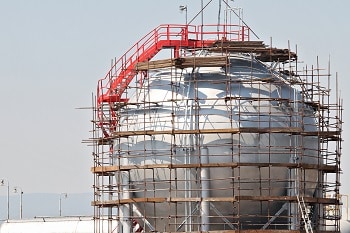Best Practices for Effective Tank Welding Inspection Processes
Best Practices for Effective Tank Welding Inspection Processes
Blog Article
An In-depth Introduction of Tank Welding Inspection Specifications and Methodologies for Improved Weld Quality and Performance
The relevance of welding inspection requirements in the manufacturing of containers can not be overemphasized, as they act as the backbone for making certain weld stability and operational reliability. Different examination techniques, including visual analyses and advanced non-destructive testing techniques, are critical in recognizing possible flaws that could compromise efficiency. Additionally, sticking to governing standards not just enhances weld high quality but likewise reduces the risk of expensive failures. As we check out the subtleties of these techniques, it becomes vital to think about exactly how an organized strategy can change existing methods and result in considerable enhancements in end results.
Relevance of Welding Assessment Standards

Welding evaluation criteria encompass a variety of criteria, consisting of product specifications, welding treatments, and certifications of employees associated with the welding process. By applying these requirements, organizations can methodically identify and rectify prospective issues, thereby minimizing the chance of costly repair services or catastrophic failings. Moreover, rigorous assessment practices promote a society of liability and accuracy, urging welders to maintain high degrees of craftsmanship.

Typical Welding Examination Strategies


Ultrasonic Examining (UT) is another prevalent strategy, making use of high-frequency acoustic waves to find interior defects that might not be noticeable externally. This approach is specifically efficient for identifying voids or inclusions within the weld steel. Magnetic Bit Testing (MT) is also extensively utilized, particularly for ferromagnetic materials, as it reveals surface and near-surface defects with the application of magnetic fields and ferrous particles.
In Addition, Liquid Penetrant Screening (PT) finds surface-breaking issues by click for more using a penetrant to the weld and after that utilizing a developer to draw out the penetrant. Each of these strategies contributes to a comprehensive examination method, guaranteeing that welds fulfill the strict quality requirements required in container building.
Governing Standards and Compliance
Regulatory standards and conformity are vital elements in making certain the safety and security and reliability of bonded frameworks in container construction - Tank Welding Inspection. These criteria serve to establish minimum requirements for material residential or commercial properties, welding treatments, and assessment methods, consequently minimizing the risk of structural failings and boosting total performance
Trick organizations, such as the American Culture of Mechanical Designers (ASME) and the American Welding Culture (AWS), offer standards that are commonly embraced in the sector. Compliance with these standards not only makes sure adherence to best methods yet additionally satisfies lawful and contractual commitments, guarding the interests of stakeholders.
Governing bodies frequently mandate adherence to certain codes, such as ASME Code Area IX for welding qualifications and API 650 for welded tanks. These codes describe requirements for welding techniques, credentials of employees, and screening techniques to validate weld honesty.
Normal audits and assessments are important to keeping conformity, as they aid recognize inconsistencies from developed requirements. Non-compliance can lead to considerable charges, job hold-ups, and safety and security threats. Hence, a robust understanding of governing standards and a commitment to compliance are paramount in achieving top quality and resilient welded tank frameworks.
Non-Destructive Testing Methods
Exactly how can the stability of bonded structures be ensured without causing damage? Non-destructive screening (NDT) methods supply a durable service, enabling inspectors to review weld top quality without jeopardizing the product - Tank Welding Inspection. Amongst the most common NDT methods are ultrasonic testing (UT), radiographic screening (RT), magnetic bit screening (MT), and dye penetrant screening (PT)
Radiographic screening includes passing X-rays or gamma rays through the weld, developing pictures that reveal structural issues such as splits or spaces. This approach is vital for assessing the integrity of intricate welds.
Magnetic bit screening is suited for ferromagnetic products, where magnetic areas disclose surface area and near-surface gaps. Dye penetrant testing utilizes a liquid color to highlight surface-breaking imperfections, making it a reliable method for non-porous materials.
Each of these NDT techniques has distinctive advantages, permitting for detailed assessments tailored to particular materials and welding procedures. By implementing these strategies, sectors can make sure the dependability and security of welded frameworks, inevitably enhancing general efficiency.
Enhancing Weld High Quality With Evaluation
Effective evaluation plays an important function in boosting weld high quality, functioning as an essential checkpoint in the fabrication process. By determining prospective flaws early, assessments reduce the risk of jeopardized architectural honesty and make sure compliance with sector criteria. Using a mix of visual examinations, non-destructive testing (NDT) techniques, and mechanical evaluations, assessors can discover problems such as porosity, fractures, and incomplete fusion.
Applying a robust examination procedure not only enhances the overall high quality of welds but also fosters a culture of you could try this out accountability amongst welders and fabricators. Normal training and qualification of examination workers ensure that they are furnished with the needed skills to identify and resolve possible issues properly. This positive method decreases rework and linked expenses, ultimately contributing to forecast performance.
Furthermore, detailed documents of evaluation findings gives important insights right into persisting concerns, assisting in continuous enhancement in welding methods. By leveraging innovative technologies, such as automated ultrasonic screening or digital radiography, weld top quality can be improved through a lot more accurate evaluations. To conclude, a rigorous examination process is important in achieving high-grade welds, ensuring safety, reliability, and durability in container fabrication.
Verdict
To conclude, the execution of rigorous storage tank welding assessment requirements and approaches is vital for making sure weld honesty and efficiency. By using a combination of aesthetic inspections, non-destructive screening approaches, and adherence to regulatory standards, organizations can properly recognize and Bonuses reduce prospective issues. Fostering a culture of liability among welders better boosts the quality of welding procedures. Ultimately, these practices contribute to minimized structural failings, reduced repair prices, and boosted operational efficiency within the market.
Report this page